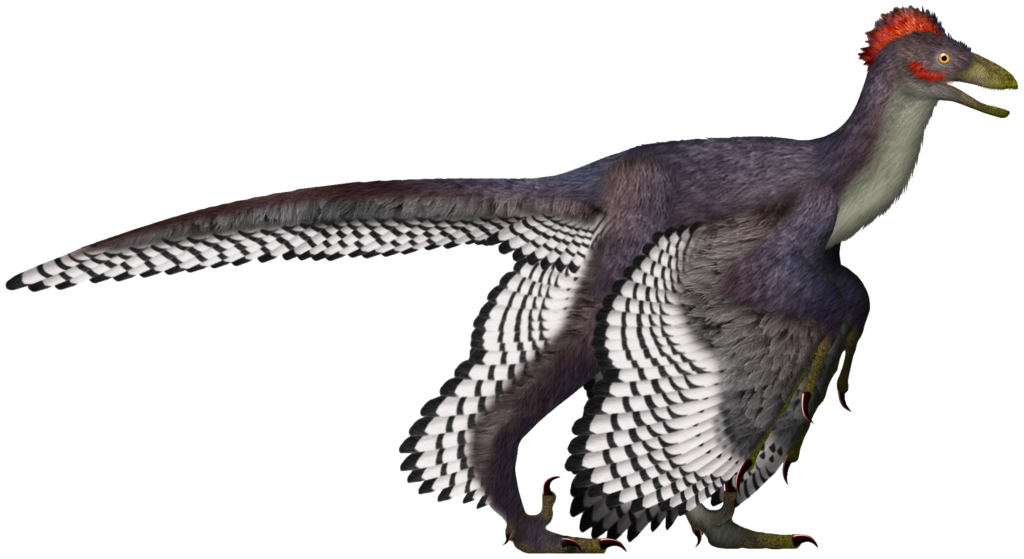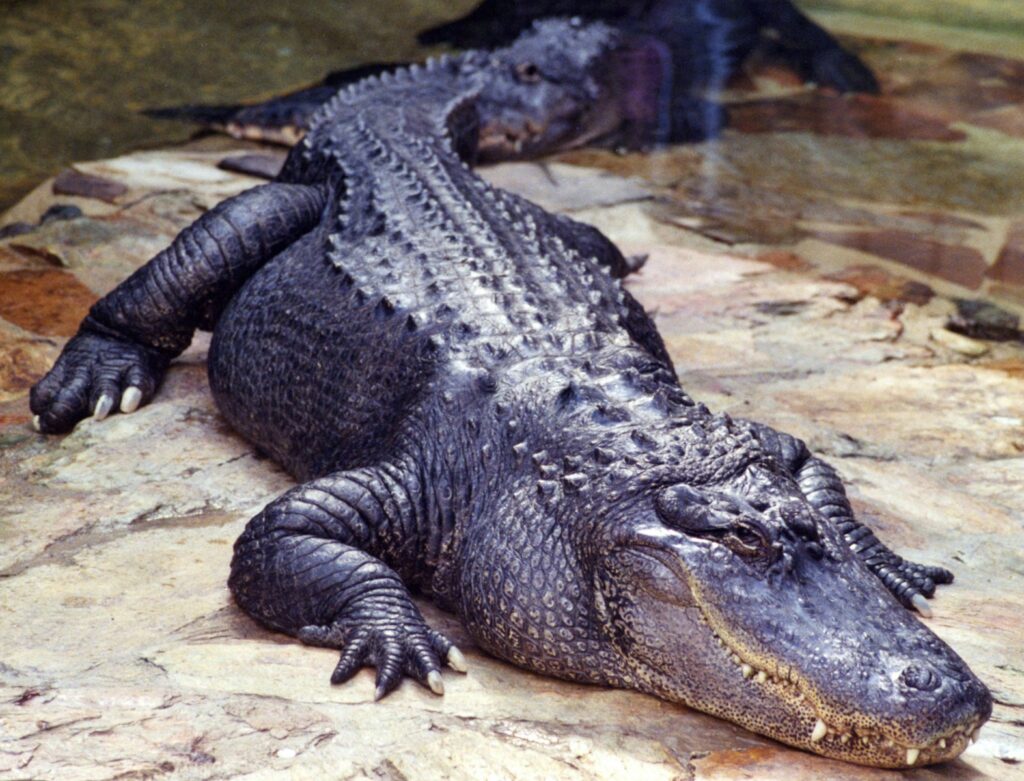For millions of years, dinosaurs dominated Earth’s landscapes as the unrivaled rulers of the prehistoric world. While we’ve made remarkable discoveries about their physical appearances, hunting behaviors, and social structures, some aspects of dinosaur biology remain shrouded in mystery. Among these enigmas is the question of dinosaur vision—specifically, whether these ancient reptiles perceived their world in vibrant color or more muted tones. Recent scientific advances have begun to unravel this fascinating question, offering glimpses into the visual world of creatures that vanished 66 million years ago.
The Science of Vision: How Color Perception Works

Color vision begins with specialized cells in the retina called photoreceptors, primarily cones and rods. While rods excel in low-light conditions but don’t perceive color, cones are responsible for color detection. Most mammals possess two types of cones (dichromatic vision), allowing them to distinguish blues and yellows but limiting their ability to see reds and greens. Humans and some primates have three types (trichromatic vision), enabling us to see a rich spectrum of colors. Some birds and reptiles possess four types of cones (tetrachromatic vision), allowing them to see ultraviolet light along with an expanded range of colors beyond human perception. Understanding these fundamentals provides essential context for investigating dinosaur vision, as scientists must determine where these ancient creatures fit within this visual spectrum.
The Dinosaur-Bird Connection: A Key to Understanding Dinosaur Vision

Modern birds are the direct descendants of theropod dinosaurs, making them living dinosaurs in a technical sense. This evolutionary relationship offers scientists a valuable entry point into understanding dinosaur sensory abilities. Most birds possess tetrachromatic vision with four types of cone cells, allowing them to see an expanded color range, including ultraviolet wavelengths invisible to humans. This sophisticated visual system helps birds identify food sources, select mates, and navigate their environments with remarkable precision. Given that birds inherited their visual systems from their dinosaur ancestors, this strong connection suggests that many dinosaurs likely possessed similarly advanced color vision capabilities. The dinosaur-bird relationship has thus become one of the most compelling lines of evidence in the study of dinosaur visual perception.
Clues from Dinosaur Skull Anatomy

Dinosaur fossils, particularly well-preserved skulls, provide important anatomical evidence about their sensory capabilities. By examining eye socket size, shape, and positioning, paleontologists can make educated inferences about visual acuity and field of view. The orbits (eye sockets) of many predatory dinosaurs faced forward, suggesting binocular vision similar to modern birds of prey. In contrast, herbivorous dinosaurs often had eyes positioned on the sides of their heads, maximizing their field of view to detect approaching predators. The impressive size of some dinosaur eye sockets, particularly in species like Tyrannosaurus rex, indicates that vision was a critically important sense. Additionally, the presence of a sclerotic ring—a circle of bones that supported the eyeball—in many dinosaur fossils allows scientists to estimate pupil size and light sensitivity, providing further clues about their visual capabilities.
The Role of Genetic Studies in Determining Dinosaur Vision

Genetic research has become an unexpected ally in the quest to understand dinosaur vision. By studying genes related to color vision in living birds and reptiles, scientists can trace the evolutionary history of these visual traits. Key vision genes like those coding for opsin proteins, which are crucial for color detection, show remarkable conservation across vertebrate species. Through sophisticated phylogenetic analyses, researchers can reconstruct when certain visual adaptations likely appeared in the evolutionary timeline. While we cannot directly test dinosaur DNA due to its degradation over millions of years, these comparative genetic studies help scientists make informed predictions about which visual genes dinosaurs possessed. This molecular evidence strongly suggests that the genetic foundation for color vision predates dinosaurs and was likely present throughout the diverse dinosaur lineages.
Fossilized Eye Structures: Rare But Valuable Evidence

Though exceedingly rare, some dinosaur fossils have preserved traces of actual eye structures, offering direct evidence about their visual capabilities. In exceptional preservation conditions, researchers have identified fossilized retinal tissues and even melanosomes (pigment-containing organelles) within eye regions. These precious findings provide tangible evidence of the components necessary for color vision in certain dinosaur species. For instance, a study of an exceptionally preserved Mesozoic bird fossil revealed evidence of rod and cone cells arranged similarly to modern birds, suggesting comparable color vision abilities. While such extraordinary preservation is uncommon, each discovery adds a crucial piece to the puzzle of dinosaur sensory perception. These fossil findings represent some of the most direct evidence available to scientists investigating prehistoric visual capabilities.
Comparing Dinosaurs to Modern Reptiles

Modern reptiles offer another valuable reference point for understanding dinosaur vision. Many reptiles today, including crocodilians (dinosaurs’ closest living relatives besides birds), possess sophisticated color vision. Crocodiles and alligators can see in color even in dim light, an adaptation that enhances their hunting abilities in murky waters and during dawn and dusk. Most lizards and snakes have good color discrimination, with some species possessing ultraviolet sensitivity that helps them locate prey and communicate with conspecifics. Turtles demonstrate remarkable color perception, particularly for blue and green wavelengths, which assists in navigation and foraging. Given that dinosaurs evolved from reptilian ancestors and share fundamental eye structures with modern reptiles, these comparisons strengthen the case that dinosaurs almost certainly possessed some form of color vision.
Evidence from Fossil Melanosomes and Pigments

Breakthrough research on fossil melanosomes—microscopic structures containing pigments—has revolutionized our understanding of dinosaur coloration. By comparing the shape, size, and arrangement of these preserved structures to those in modern animals, scientists can reconstruct the actual colors of certain dinosaur species. For example, studies of the small feathered dinosaur Microraptor revealed it likely had iridescent black feathers similar to modern crows. The presence of complex coloration patterns in many dinosaur species strongly suggests they could see these colors themselves, as evolutionary pressure would favor developing color vision to recognize such patterns. This evidence is particularly compelling because animals rarely evolve elaborate color displays unless they and their potential mates or rivals can perceive these colors, suggesting dinosaurs possessed the visual hardware to appreciate their colorful appearances.
The Evolutionary Advantage of Color Vision for Dinosaurs

Color vision would have provided numerous survival advantages for dinosaurs in their prehistoric ecosystems. For predatory dinosaurs, color discrimination would have enhanced hunting efficiency by helping them spot camouflaged prey against varying backgrounds and identify vulnerable individuals within herds. Herbivorous dinosaurs would have benefited from color vision to select nutritious vegetation, avoid toxic plants, and detect approaching predators despite their camouflage tactics. During mating seasons, color vision would have been crucial for recognizing species-specific display features and assessing potential mate quality through colorful signals of health and genetic fitness. Additionally, color perception would have facilitated complex social behaviors within dinosaur groups, allowing for visual communication through body coloration, displays, and posturing. These significant adaptive advantages make it highly probable that natural selection favored the development and maintenance of color vision across dinosaur lineages.
Scientific Debates: Alternative Viewpoints on Dinosaur Vision

Not all scientists agree on the extent of color vision in dinosaurs, with some researchers advocating more conservative interpretations of the available evidence. Some paleontologists caution against making broad generalizations about dinosaur vision, given their tremendous diversity spanning over 165 million years of evolution. Different dinosaur lineages likely evolved varying visual capabilities based on their ecological niches, activity patterns, and evolutionary history. Some researchers question whether nocturnal or crepuscular dinosaur species would have maintained full color vision, as many modern nocturnal animals have reduced color perception in favor of enhanced light sensitivity. Others point to the limitations of inferring sensory abilities from fossil evidence alone, noting that soft tissues crucial for determining visual capabilities rarely preserve. These scientific debates highlight the complexity of reconstructing sensory systems in extinct animals and the importance of continued research and healthy scientific skepticism.
Case Studies: Specific Dinosaurs and Their Likely Visual Capabilities

Research on specific dinosaur species has yielded fascinating insights into their probable visual abilities. Tyrannosaurus rex likely possessed exceptional vision, with forward-facing eyes providing depth perception crucial for hunting and visual acuity estimated to be 13 times greater than humans. Studies of Velociraptor suggest it had excellent vision adapted for hunting, with eye sockets positioned to provide good binocular vision and probable color discrimination helpful for detecting prey. Analysis of Triceratops skull anatomy indicates large eyes with a wide field of view, consistent with herbivores needing to monitor their surroundings for predators, likely with color vision to help identify nutritious vegetation. Research on the small theropod Microraptor, with its iridescent feathers, strongly suggests it possessed color vision capable of appreciating its spectacular plumage. These case studies demonstrate how analyses of specific species can provide a more nuanced understanding of the diversity of visual adaptations across different dinosaur groups.
Modern Technologies Advancing Dinosaur Vision Research

Cutting-edge technologies are transforming how scientists investigate dinosaur sensory capabilities. Advanced imaging techniques like computed tomography (CT) scanning allow researchers to create detailed three-dimensional models of dinosaur brain cases and eye sockets without damaging precious fossils. These models help determine eye size, shape, and orientation with unprecedented precision. Scanning electron microscopy enables scientists to examine microscopic structures like melanosomes in fossilized skin and feathers, revealing evidence about coloration patterns that dinosaurs would need color vision to perceive. Computer simulations and modeling can recreate how dinosaur eyes might have processed light based on comparisons with living relatives. Artificial intelligence algorithms are being employed to identify patterns in dinosaur skull anatomy that correlate with specific visual adaptations in modern species. These technological innovations continue to expand our ability to investigate questions that once seemed permanently beyond scientific reach.
The Future of Dinosaur Vision Research

The field of dinosaur vision research continues to evolve rapidly, with several promising avenues for future discoveries. Paleontologists anticipate that new fossil finds, particularly those preserved in exceptional conditions, may yield more direct evidence of eye structures and visual adaptations. More sophisticated genetic analyses of living birds and reptiles will further clarify the evolutionary timeline of color vision genes, providing stronger inferences about dinosaur visual capabilities. Advanced computer modeling may soon allow scientists to “reconstruct” dinosaur visual systems and simulate how these ancient creatures might have perceived their world. Interdisciplinary collaboration between paleontologists, comparative anatomists, molecular biologists, and vision scientists promises to yield a more comprehensive understanding of dinosaur sensory experiences. As methods become more refined, researchers hope to determine not just whether dinosaurs saw in color but exactly which colors they could perceive and how this shaped their behaviors and ecology.
Conclusion: The Colorful World of Dinosaurs

The weight of scientific evidence strongly suggests that most dinosaurs did indeed see in color, possibly with visual capabilities exceeding our own. While we may never know with absolute certainty the exact nature of dinosaur color perception, modern scientific approaches have considerably narrowed the gap in our understanding. From the anatomical evidence preserved in fossils to the genetic connections with living birds and reptiles, multiple lines of investigation converge on the conclusion that dinosaurs inhabited a world rich with color. This realization transforms our mental image of the Mesozoic Era from a monochromatic landscape to a vibrant ecosystem where visual signals played crucial roles in dinosaur ecology, behavior, and evolution. As research techniques continue to advance, we can look forward to an increasingly detailed and nuanced picture of how these magnificent creatures experienced their colorful prehistoric world.




